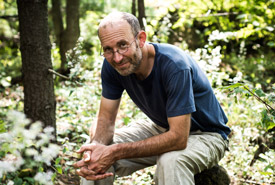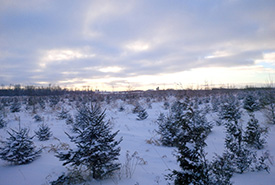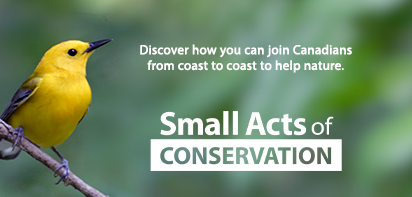
Jim Phillips of Copernicus Educational Products (Photo courtesy of Copernicus)
Jim Phillips, Copernicus Educational Products
CEO
We recently chatted with one of our corporate partners, Copernicus Educational Products CEO, Jim Phillips. We discussed his company’s various environmental initiatives, from their extensive restoration and conservation of 100 acres (46 hectares) of forest and grassland at their company headquarters north of Guelph, to their ongoing Trees for Schools program. Jim shared his frank impressions of being a CEO who prioritizes the environment, and his appreciation for the nature he grew up with in Ontario.
Tell us a bit about yourself and Copernicus Educational Products.
Copernicus started with my father in 1989 full time, in the basement of his house. Then we moved up to the garage, and in 1993 we built a little shop. We manufacture and distribute educational furniture and equipment for schools. Our very first product was a science kit — for teaching hands-on science. In a nutshell, when you include our team in China, we've grown to a team of about 60 people.
That leads us to our next question, about the environmental restoration on the Copernicus property: what made you so interested in biodiversity and conservation? Was this a natural progression, given the scientific focus of your products?
I think it was a combination of having been brought up in the country, being exposed to agriculture as a child and getting exposed to wild spaces when I was 19.
Did your Trees for Schools program inspire the restoration of your property?

Young trees on Copernicus' reforested property, as seen on Jim's ski home from work (Photo courtesy of Copernicus)
Actually, naturalizing our property inspired our Trees for Schools program. Our [restoration] work on the property began in the late 90s, and finished up around 2008. It's a 40-hectare parcel (100-acre), basically planted in a combination of tamarack, spruce, pine, maple and cedar.
There are some wild grassland areas as well. It’s amazing to see all the wildlife that it now attracts, especially in the grasslands.
Are you able to get out on the property much?
Well, I did get to ski partway to work today. I was able to park my car and ski through the property. It’s really nice, especially at this time of the year, and great to see how well the trees are growing.
As a business owner, are you seeing environmental initiatives as a trend in corporate social responsibility?
When you look at how much initiatives like 1% For The Planet have grown, there seems to be a lot of momentum there, and proof that the cause has traction.
What blows me away is when you look at the revenue of environmental organizations like the Nature Conservancy of Canada, and then you look at corporate revenue — even a small company like ours — it’s a clear indicator that things are out of whack, big time. It’s insane.
That’s what’s motivating me to try and ramp things up, knowing that manufacturing companies are a burden on the planet. That’s the only way you can sum it up. If you think otherwise, you’re a fool.
Do you have any words of wisdom for other business owners who may be interested in similar initiatives?
I think it makes life and work a whole lot more meaningful. It felt like I was always grasping for a real and meaningful company objective. For years and years, we got caught up in being the best company in the world, trying to have the best product, but as soon as we shifted away from that to the idea of social responsibility as the primary objective, I felt like, all of a sudden, there’s some real meaning there.
It’s not just fluff and nonsense. I realise that’s a very personal thing, and I think a lot of it may have to do with age, because I’m in my late 40s now. The way you think as you get older, you start to get more concerned.

Copernicus Educational Products CEO Jim Phillips at company headquarters near Guelph, ON (Photo courtesy of Copernicus)
During the early years it was about just trying to survive. That was the reality. And with our very first product, the science block kit, when we were still working out of the basement, I found an organization called Trees for Today and Tomorrow (or something like that), and I thought “oh great, we can donate money from every kit that we sell!”
The reality was that we didn’t have the money. In the beginning, there was no money, period. So, I realize a lot of it has to do with the stage a company is at.
Why is partnership with the Nature Conservancy of Canada a good fit for you and for Copernicus?
I’ve always liked the idea of the money going directly to land conservation. It’s very tangible. It’s powerful. I used to donate personally, so this was a natural progression.
Copernicus has a goal to donate 35,000 tree seedlings in 2016 to elementary schools across Ontario for their Trees for Schools program. Requests for trees are due by March 31, 2016, and you can learn more at http://www.copernicused.com/treesforschools.




